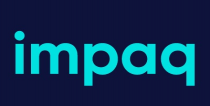To regulate or not to regulate?
The question is often asked why government wants to regulate home education. Home education seems to work well and does not place any demands on the state. To the contrary, it saves money. Why can’t government not leave home educators alone?
There are many possible reasons why government wants to regulate home education. Public interest, economic stability, equity, order, security, etc. Questions about the exact intentions of government with home education legislation did not provide any cogent answers.
Despite a lack of clear intention, the South African government decided to regulate home education in the Basic Education Laws Amendment (BELA) Bill. However, when this bill was submitted to parliament, neither the memorandum that accompanied the bill nor the Socio Economic Impact Assessment (SEIA) provided a clear statement of intent.
Despite this lack of intention and purpose, parliament proceeded to engage in various phases of public participation on the BELA Bill. During these engagements, many objections were submitted. Some however feel we should not only criticize, but also propose solutions. Otherwise, government will just do what it thinks is best. But what to propose knowing the intentions government seeks to realize?
For this reason, it could be worthwhile to look at a different social phenomenon with some noteworthy commonalities. Crypto currency is such a phenomenon. Both home education and crypto currency have the following characteristics:
- They have emerged over the last decades and are of the fastest growing phenomenon’s globally, despite attempts by various governments to contain it.
- If adoption levels are reaching certain levels, it could significantly disrupt the status quo and cause serious threats to many vested interests (E.g., the Banks and the School system).
- Government regulation of the phenomenon varies significantly from one jurisdiction to another. From absolutely no regulation to outright banning.
- Both phenomena are radically different from the status quo. Crypto currencies do not fit into the existing categories in the financial sector. For example, Bitcoin is neither only an asset nor a currency. Similarly, home education is neither only schooling nor parenting nor religious instruction. This makes it difficult to regulate these phenomena through existing legislation. It also causes a lot of misunderstanding among legislators.
Although both phenomena are fast growing in the context of their sectors, there is an order of magnitude difference between the growth of crypto currencies and home education. Crypto currencies are growing at a pace that exceeds the internet and mobile phones, whether home education grows much slower, although it is the fastest growing modality in the education sector.
The result of this growth difference is that crypto currencies have caught the attention of legislators to a much larger extent than home education did. Legislators are now grappling with the problem of how to regulate crypto currencies. For this reason, the World Economic Forum is now providing guidance on the different types of regulatory approaches the legislators can consider. (https://www3.weforum.org/docs/WEF_Pathways_to_the_Regulation_of_Crypto_Assets_2023.pdf)
- Principle-based regulations lay out the broader principles and the outcomes intended. Instead of prescribing detailed rules, this regulatory approach outlines the results and performance expected. While there is flexibility for businesses to achieve the outcomes, this approach is usually supported by guidance, industry standards and other non-statutory approaches to providing clear direction. Importantly, outcomes should be sufficiently long-term to provide stability and predictability. The benefits of this approach are innovation and flexibility. The drawback is regulatory uncertainty. It is impossible to predict how governments will implement these principles and it might vary between countries.
- Risk-based regulations are based on the assessment by the regulator of the risks relevant to their mandate, and the appropriate level of intervention required in accordance with the level of risk. If an actor performs low-risk activity, the regulation would be accordingly streamlined, providing for lower compliance requirements. This enables regulators to use their resources efficiently, focusing their efforts on higher-risk activities. The challenge of this approach is data gaps in assessing risks. The benefits are certainty as regulation is proportionate to risk and it allows for efficient resource allocation.
- Instead of prescribing and enforcing rules, agile regulation adopts a responsive, iterative approach, acknowledging that policy and regulatory development is no longer limited to governments but is increasingly a multi stakeholder effort. This approach needs lots of coordination and collaboration and creates lots of uncertainty. On the other hand, it is flexible and appreciates market maturity and ecosystem development.
- In self-regulation, industry representatives coordinate and collaborate to formulate voluntary standards or codes of conduct. Being industry driven, self-regulation has the benefit of maintaining awareness of ecosystem requirements and has the ability to build trust between industry, consumers and regulators. However, it is susceptible to lighter requirements and may not be effectively enforced due to lack of direct regulatory backing. The benefit of this approach is that it builds trust in the ecosystem and is innovation friendly. The disadvantages are that it could easily be captured by dominant players and there is a lack of accountability if something goes wrong.
- Regulation by enforcement indicates that enforcement actions are being used to define regulatory frameworks by attempting to enforce existing laws in the courts. The benefit of this approach is that there is rich jurisprudence development and accountability for unscrupulous actors. The disadvantages are a lack of certainty and predictability and a non-collaborative innovation environment.
Moving towards the development of a regulatory framework for home education, several questions should be answered first. What should the outcome of regulation be? What are the risks associated with not regulating home education? Who are the appropriate stakeholders in home educators? How should the sector be represented? Can home education fit into the existing regulatory legal framework? It will however be difficult to answer any of these questions without a clear statement of intention.

Comments
Events
Legal & Research
Homeschooling and the law
Home schooling was recognized in 1996 in Section 51 of the SA Schools
+ ViewCentres
Homeschool ABC
Support
Curriculums
Impaq: Homeschool & Online ...
Impaq: The leading homeschooling curriculum provider in South ...
GED through Learnalot - Grade 12 ...
Why enrol with Learnalot? With Learnalot, you have the flexibility ...
Music Classes: Percussion Music ...
Percussion Music Group There is no greater joy than making ...
Frequently Asked Questions
-
Do homeschoolers take holidays?
Yes, they take breaks. Some homeschool families follow the public school year calendar especially if they are involved in sport and music...
-
Do I need to be a qualified teacher?
No. Research has found no correlation between the qualification of the parent and the academic performance of the child. Research shows that...
-
Can I be a working mom and homeschool?
Single parents who are committed to homeschool organize a schedule around their work commitments and sometimes involve family or tutors to assist...
-
How does homeschooling work?
Homeschooling is different for every family as it depend on the parents educational goals for their children Education is the development of the...
Has no content to show!































